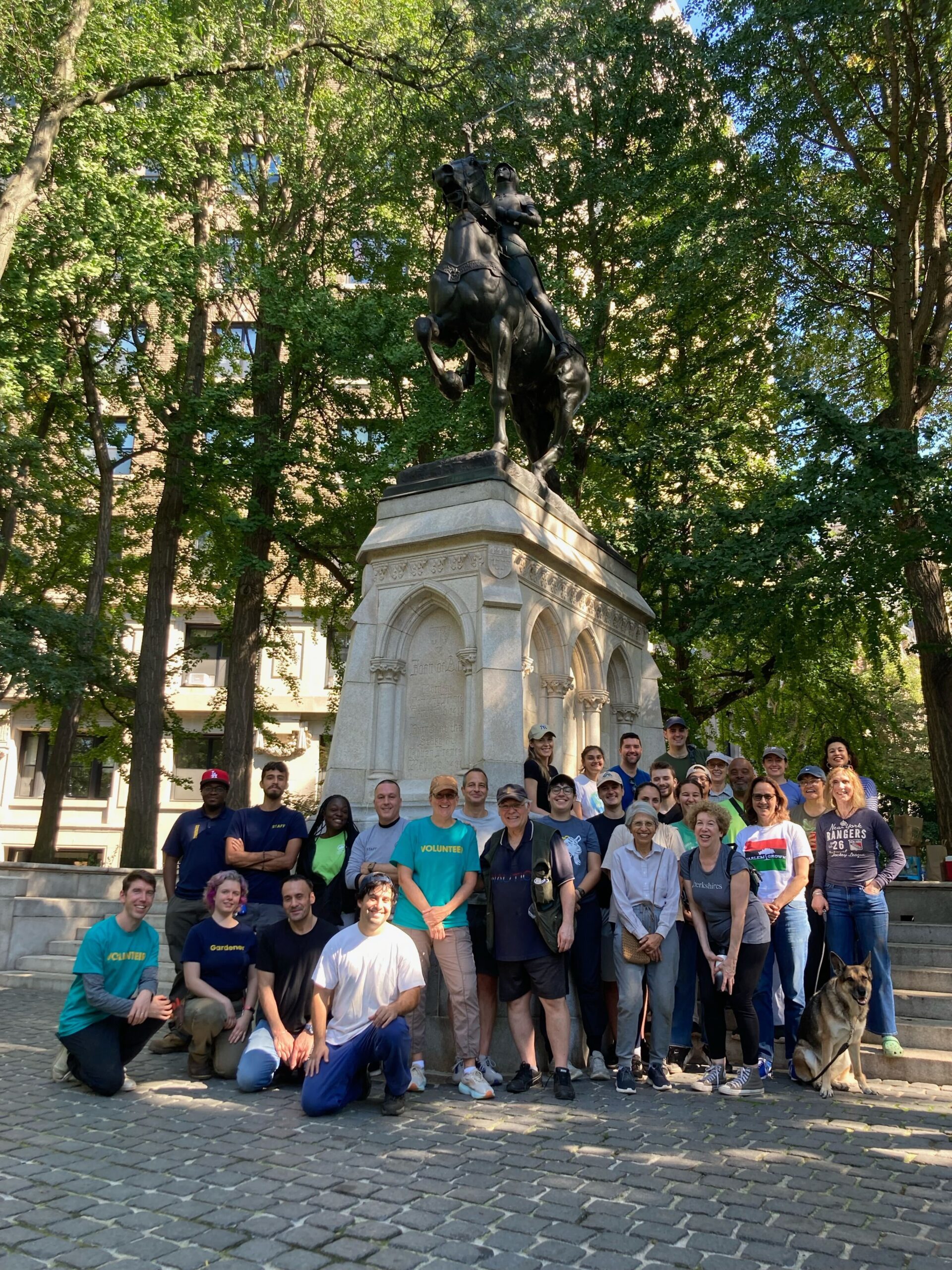Located at 93rd Street and Riverside Drive, the over life-size bronze statue of Joan of Arc features her in armor, holding aloft her sword and standing in the saddle of her warhorse. The sculptor, Anna Hyatt Huntington, wanted to depict Joan as spiritual rather than warlike. Much like Joan, Anna Hyatt Huntington was a remarkable, trailblazing woman. She had a prominent career as a sculptor at a time when few women achieved success in the art world.
Hyatt Huntington was attempting to represent an incident that occurred after Joan found the sacred sword where “She is holding it [the sword] up to her God and praying for guidance.” Architect John Van Pelt designed the granite pedestal upon which the statue rests in the Gothic style. He incorporated stones from Rheims Cathedral and stones from the dungeon at the Tower of Rouen into the blind arches of the pedestal so that it is a literal witness to both Joan’s moments of triumph and disaster.

A large crowd gathers around the Joan of Arc Monument at the dedication in 1915
The statue in Riverside Park was actually modeled after a life-size plaster equestrian statue designed by Hyatt and exhibited at the Paris Salon in 1910. Around the same time, an American committee was planning a monument to commemorate the 500th anniversary of the birth of Joan of Arc. Hyatt’s design caught the eye of Americans who attended the exhibit at the Paris Salon. In 1914, the commission was awarded to Ms. Hyatt. In 1915, in the midst of World War I, French Ambassador Jean Jusserand came to Riverside Park for the dedication of this monument and presented Anna Hyatt with the Légion d’Honneur for creating a monument to France’s national heroine. Hyatt’s was the first New York City park monument dedicated to a nonfictional woman.
In the spring of 1987, the “Adopt-A-Monument” Program, a joint partnership between the Municipal Art Society, the Department of Parks and Recreation, and the Art Commission of the City of New York, appealed to the business community to save 20 endangered monuments throughout the City. The Grand Marnier Foundation chose to clean and restore the Joan of Arc Statue with a $34,500 grant. Developers of 222 Riverside Drive donated funds to help revitalize the area in the form of erosion control, regrading, seeding, new plants, trees, pathways, and fencing.
Today, the Riverside Drive island (92nd – 95th Street) where the Joan of Arc Monument resides is maintained by a dedicated group of Riverside Park Conservancy’s Grassroots Volunteers, the Joan of Arc Statue Committee.




